The stone fortresses of ancient Iberians: a chronology of historical drama
Isaiah 25: 2
Castles and fortresses. Many readers of VO liked the material “Castles and ancient settlements of Lloret”however, at the same time, they drew attention to the fact that there was not very much about the fortifications of ancient Iberians in it, but this is a very interesting topic. Many would like to know that modern science speaks of Iberians and in more detail about the fortified settlements found by archaeologists in the area of the town of Lloret de Mar. Well, today we fulfill their wish.
The heyday of Iberian civilization
To begin with, there are various hypotheses regarding who the Iberians are. One at a time, they arrived in Spain from the Eastern Mediterranean. Another claims that, yes, they are aliens, but ... from North Africa. Others consider them to be descendants of the local, even more ancient cultures of El Argar and Motillas. The simplest explanation is that they are also Celts and ... that's it. Iberians settled along the Mediterranean coast of Spain. Their settlements are found in Andalusia, Murcia, in Valencia and in Catalonia. They also influenced the formation of the culture of the people who lived in the north-central region of the Iberian Peninsula, the so-called Celtiberians. Iberians possessed bronze processing skills, were engaged in agriculture and cattle breeding. It is also known that later they appeared cities and developed social structure. Well, they mined so much metal that they traded it with Phenicia, Greece and Carthage.
The heyday of Iberian culture in the south and east of the Iberian Peninsula falls on the VI and III centuries. BC. It is known that during this time the Iberians led a sedentary lifestyle, lived in groups in settlements on the tops of hills, which were surrounded by fortress walls, and their houses were made of stone and clay and roofs made of reed. Interestingly, the Iberians quickly mastered the processing of iron, and in the pottery they did not know their peers, making beautiful painted vessels, although completely unlike the Greek ones. And although all Iberians belonged to the same culture, from a political point of view their society was far from homogeneous, because of which there were private feuds in their midst. This way of life has led the Iberians to become very warlike people, and the fortifications have become an integral part of all Iberian settlements!
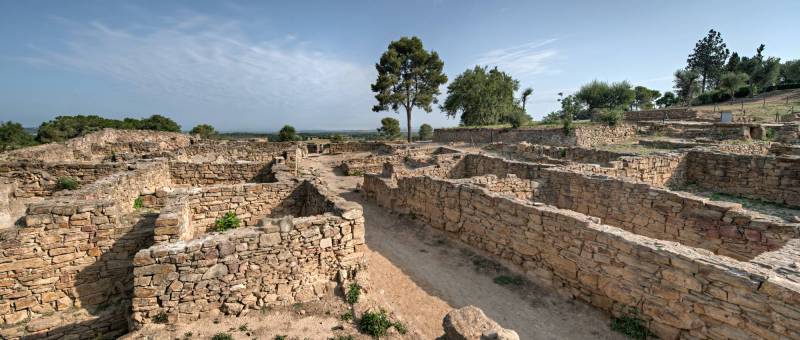
So today it looks like what was once a settlement of the ancient Iberians. And then, the walls ... of course, partially restored
The invasion of the Carthaginians
In the III century. BC. the city of Carthage became dominant throughout the western Mediterranean and also in Sicily and on the Iberian Peninsula. His interests clashed with the interests of another state - Rome, and the result of their confrontation was first the First, and then the Second Punic War. The first led to the loss by Carthage of Sicily, Corsica and Sardinia, but he recouped by expanding his possessions in Spain. Obviously, this led to a clash with the locals and led to the fact that the Greek colonies of Ampurias and Roses began to seek the protection of Rome.
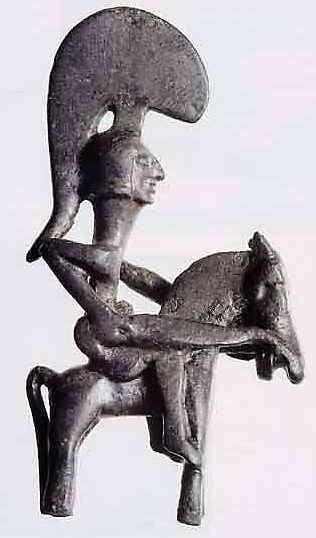
"Warrior of Mohente." The figurine is kept in the Museum of Prehistoric Times of Valencia.
Roman conquest of Iberia
In 218 BC in Ampurias Roman troops landed, commanded by Gnei and Publius Cornelius Scipio. The Carthaginians were defeated, expelled from the peninsula and lost all significance here. But the Romans, too, did not leave Spain. They divided the territories they occupied into two provinces, giving them the names Near Spain and Far Spain. The Iberians were required to disarm, since now the Roman troops had to defend them. Iberians responded to this with the uprisings in 197-195. BC, but they were crushed, and their fortified settlements, including in the area of Lloret del Mar, were destroyed.
Iberia under Roman rule
Interestingly, the conquerors, although they pursued a strict tax policy, did not at all encroach on the language and culture of the Iberians, nor did they force them to change the nature of their economic activity. The process of Romanization, of course, took place, especially among the local nobility, but it was not violent. As a result, during the second century. before. AD Iberians more and more imbued with Roman culture. They ceased to be at enmity with each other, built new settlements, in particular, Turo-Rodo, maintained their lifestyle and traditions, and began to produce even more ceramic products, since very often they paid taxes to Rome.
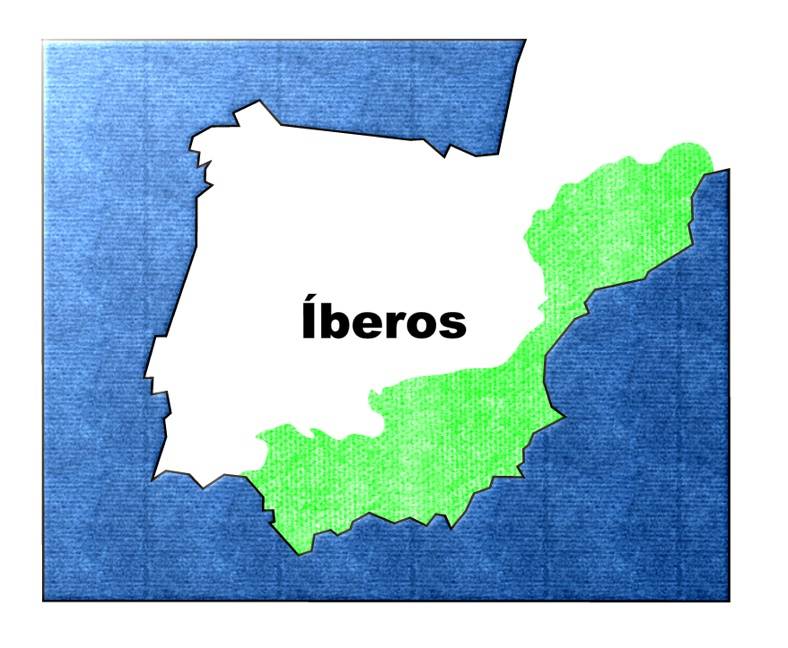
Map of Iberian resettlement in Spain
Over time, the effects of romanization began to appear. So, Iberians began to use shingles for roofs, not reeds, to store crops not in pits, but in large ceramic amphoras; accordingly, the exchange nature of exchange was replaced by money. Coins with symbols and inscriptions of Iberians, as well as scripts using the Latin alphabet, were distributed, while the letter itself was Iberian.
A significant role in the spread of the "Roman world" was the support by the Romans of local cities in Catalonia, in particular Blanes, to whom the Romans granted the status of a municipality.
In the first half of the XNUMXst century BC. the process of romanization accelerated. The economy of the region completely merged with the economy of the Roman Empire and at the same time, specialization and division in the field of agriculture took place. In particular, the hot of Spain has become a place for the production of "Spanish wine", which is valued in winemaking Italy for its excellent taste from the local ones. Wine exports accelerated the development of the local economy, and with it the Roman influence in Spain. As a result, by the beginning of the first millennium AD, the Iberian civilization as such had practically ceased to exist, and the lands on which it had once arisen finally became part of the great Roman Empire.
However, Rome also inherited something from the Iberians. So, the famous Roman sword - gladius was borrowed by them precisely from Iberians and at first it was called “gladius hispanicus” (that is, “Spanish sword”). The earliest and most typical appearance of such a sword was about 75–85 cm long, about 60–65 cm long, and about 900–1000 g weight. The blade had a characteristic leaf-like shape with a pronounced waist near the hilt, and resembled a pointed gladiolus leaf .
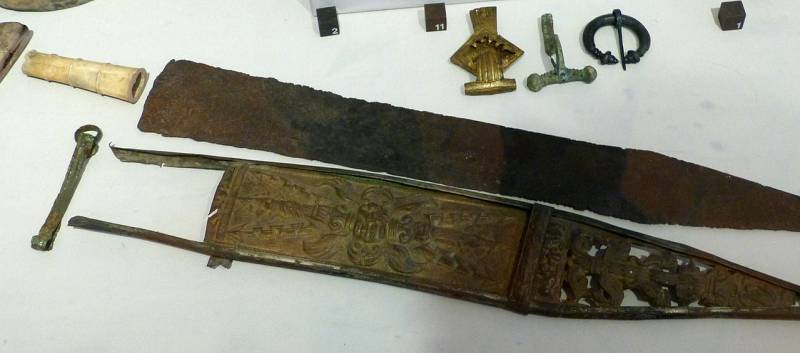
Roman gladius of the 53,5st century AD Length 7 cm, maximum blade width - XNUMX cm. Archaeological Museum of Strasbourg
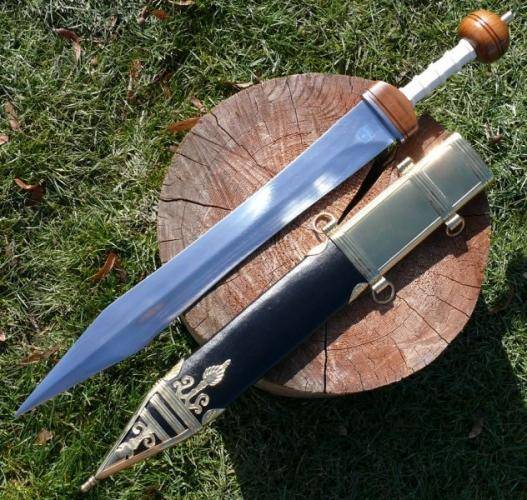
Modern replica of a gladius from Strasbourg
The Spanish Iber was also known for such a sword as a Falcata, which is generally very widespread in the Mediterranean. However, it is significant that the Romans gave him the specific name “Spanish saber” - “mahahera hispana”, as well as the “Spanish” name for his direct sword with a leaf-shaped blade. That is, this clearly indicates the mass use of these two types of swords in Spain, while different types of this were used in other lands. weapons.
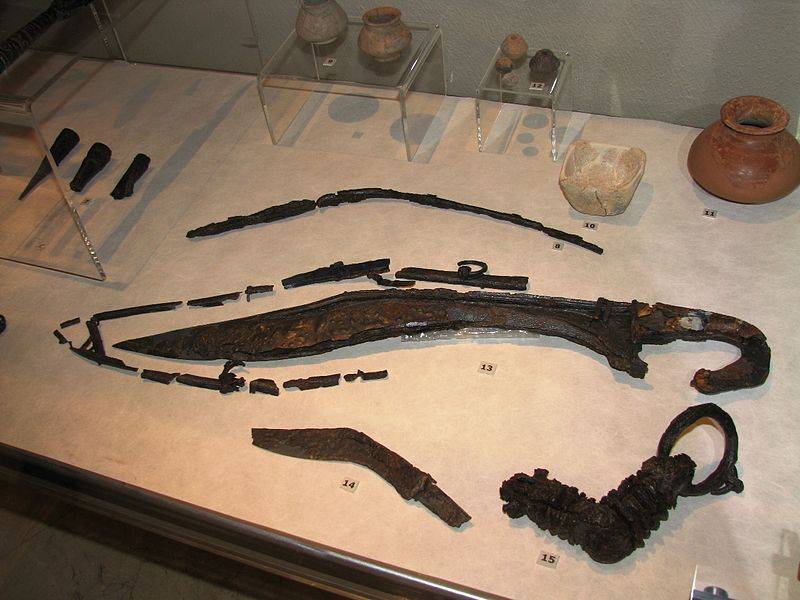
Falcata IV century before. n e. (Archaeological Museum of de Villena, Alicante)
Traditions report the high quality of the Iberian swords of the XNUMXrd century. BC e., which are easily bent and straightened without any consequences. This indicates that hardened steel was used for their manufacture, which could spring, and not bronze or iron. Most likely this sword originally came to the Iberians through the Greeks, but the warlike Iberians really liked it, and the fashion to carry it in a sheath behind its back spread among them. This seemed unusual to the Romans, they gave their weapons their “local name”, and then they adopted the sword itself from the Iberians.
Montbat. Fortress at the crossroads of trade roads
In the previous article, we talked about the Iberian village of Montbarbat, located in the northwestern part of the town of Lloret de Mar. The settlement is difficult to access, since it is located on a mountain 328 meters high. In fact, it was a kind of watchtower of the ancient Iberians: the view from here is beautiful and can be seen far. From here it was possible to control the ancient Hercules road from north to south, and the path along the river Tordera from the coast inland.
They knew about the settlement for a long time, but excavations here began only in 1978. Today they have unearthed an area of 5673 square places and cleared a section of the wall with a length of 90 m, as well as one of the two found towers.
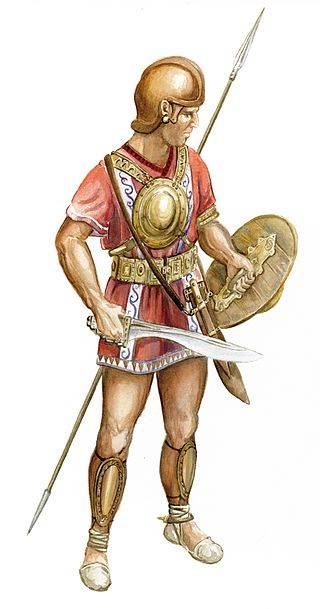
Reconstruction of the Iberian warrior V-IV BC e. F. Chinera. (Museum of the History of Valencia)
It turned out that the settlement was surrounded by a wall on all sides, and its length was 370 m. The thickness of the wall was 1,2–1,5 m. It was composed of hewn stones, tightly fitted to each other and laid in two rows. The space between them is filled with pebbles mixed with earth. There is no foundation. Wall masonry was carried out directly on the stone base. The thickness of the walls of the tower is the same. Its area inside is 14,85 square meters. Interestingly, the exit from it did not lead to the street, but to the living room with a hearth. They also managed to unearth seven houses and a water tank. We also found workshops of artisans, which also had tanks for water, drains and sewers. Obviously, something perishable was being processed here.
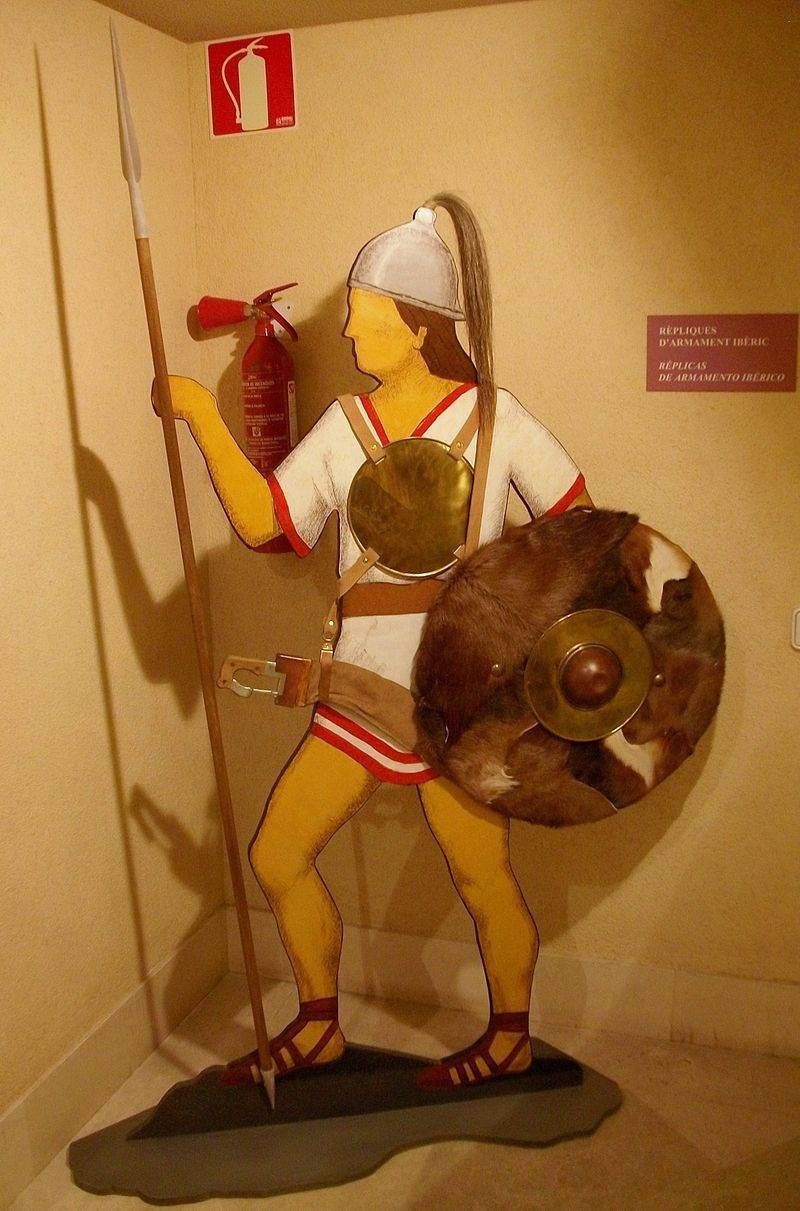
Exterior of the Iberus Warrior (Municipal Archaeological Museum of Alcoy, Valencia)
Judging by the finds, they lived here from the second quarter of the XNUMXth to the beginning of the XNUMXrd century. BC. This is, first of all, shards of attic black-lacquered ceramics, which were later replaced by the ceramics of the Greek colony of Roses. Interestingly, the population left Montbarat gradually. There is no sign of destruction or fire. But its inhabitants settled somewhere nearby, although this place was not found. But there are traces of ceramics of the Middle Ages and even the New Age. So, somewhere nearby they settled, and lived here for a very long time.
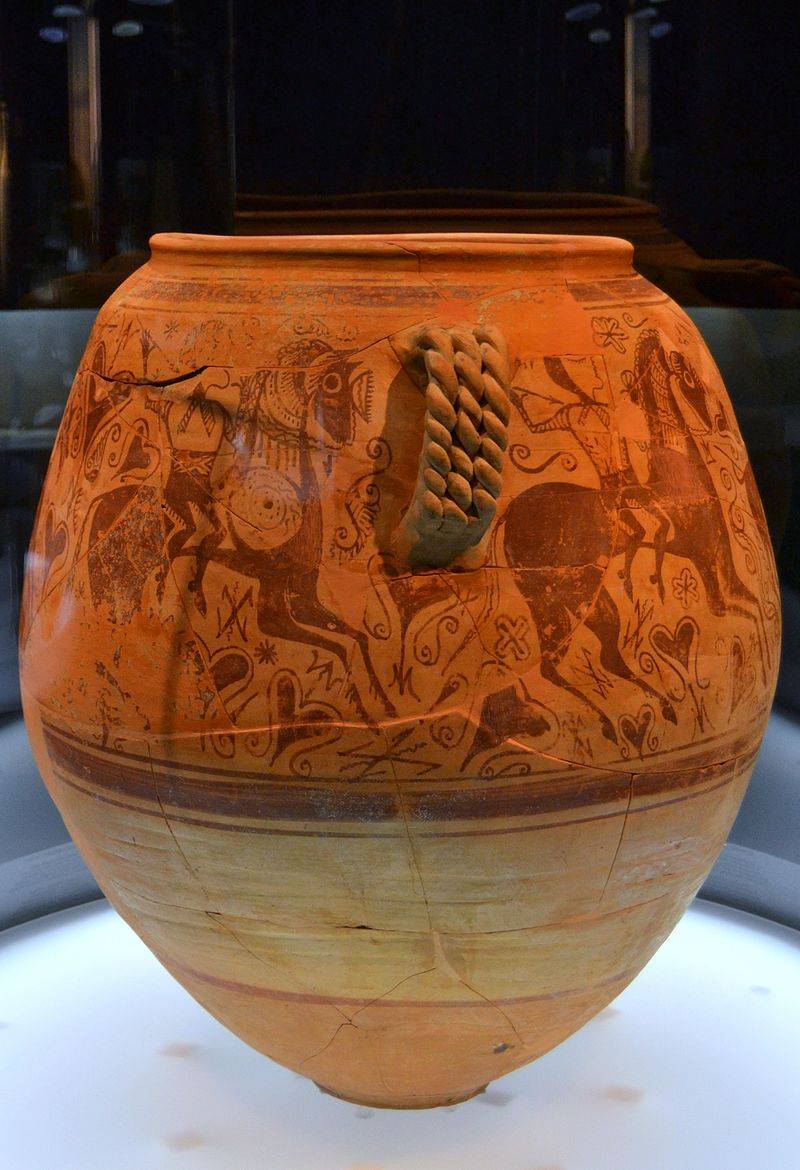
Iber riders also already had. Vessel with the image of a horseman with a spear (Municipal Archaeological Museum of Alcoy, Valencia)
Puich de Castellét. Fortress for thirty souls
This settlement is located two kilometers north of the city limits of Lloret de Mar, on a rocky ledge with a height of 197 m. The settlement was also surrounded by a wall with towers, with only 11 dwellings inside. All of them adjoined the walls, and in the center was a square. It arose in the second half of the XNUMXrd century. BC.
We found it back in the 40s of the last century and dug it up intermittently until 1986. It was possible to find out that the length of the settlement wall was 83 m. There were two towers, and both of them were passing. It is interesting that out of 11 residential buildings there were only six, that is, in total 30 people lived in this fortress no more, since all other premises were used ... for warehouses! The living quarters had two or three rooms, and foci were found in them. It is surprising that so few people lived in such a well-fortified place and, a legitimate question, what did they do here? Millstones are found - it means they ground the grain, loads of weaving mills. And yet - was the stronghold too much for such a small community?
Turo Rodo. Sea view fortress
Well, for lovers of fishing and the open sea there was also the village of Turo Rodo, right on the territory of the town of Lloret de Mar, almost near the sea. The hill where it is located has a height of 40 meters. In the north, it is connected to the mainland by an isthmus about 50 meters wide. From all other sides, the hill almost steeply cut off towards the sea. The entire coast was visible from the hill, which was very convenient in the sense of observing uninvited guests.
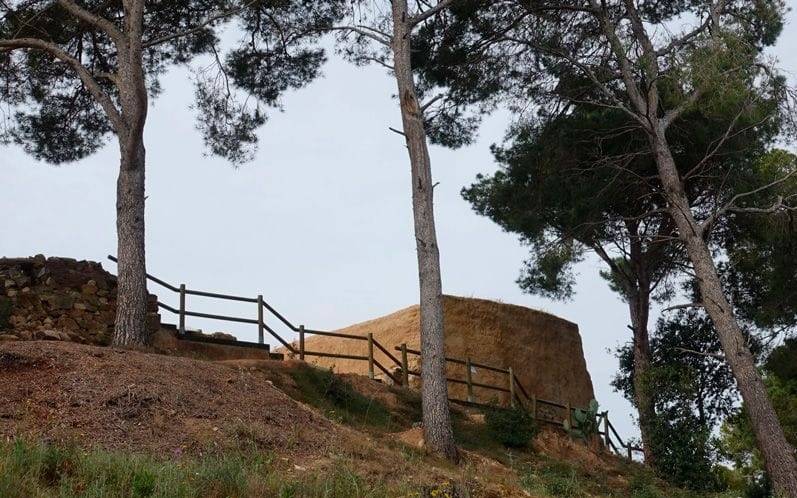
The most extreme houses of Turo Rodo are located on the very edge of the cliff!
It was completely excavated only in 2000-2003. and found that people lived here from the end of the 1,1rd century. BC. and until the first decades of the 1,3st century. AD The entire northern part of the settlement was protected by a wall 40 - 11 meters wide, built of stones fastened by an ordinary length. The wall was surprisingly well preserved for almost XNUMX meters, and again it was double, and the gap was filled with pebbles. XNUMX dwellings were also found on the territory of the settlement: seven on one side and four on the opposite, right on the edge of the cliff. All houses are rectangular in shape, covered with reeds. The windows are small. There are two rooms inside. The hearth is usually located in the second, the entrance to which, apparently, was curtained. There was no door in the first door, and it was through it that it was lit. Therefore, there, most likely, there were looms.
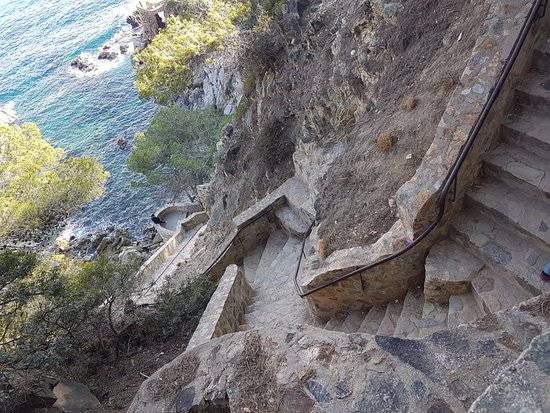
That's how they get up there now. From the sea. However, there is another way, not so steep!
Findings indicate that the population of the village fished, engaged in agriculture (we grow grain) and weaving. From 60 BC the inhabitants of the settlement began to leave it, moving to more populous and civilized places.
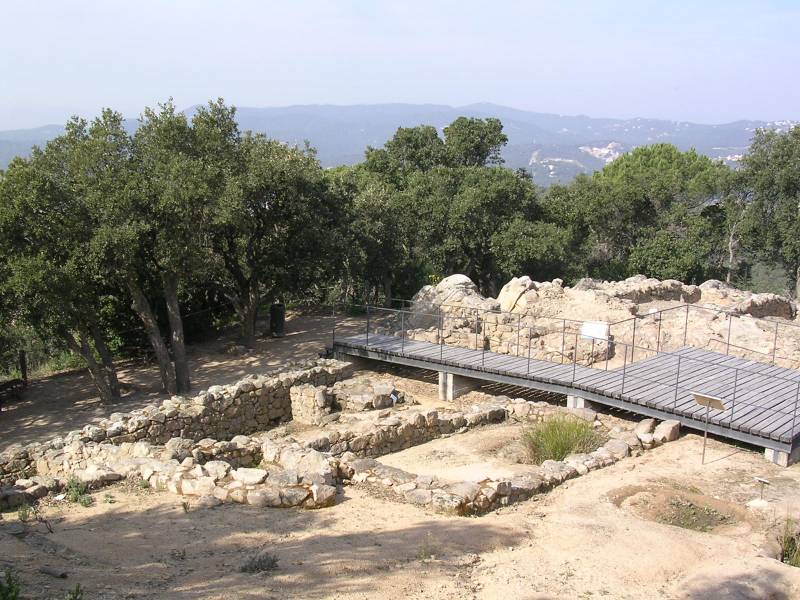
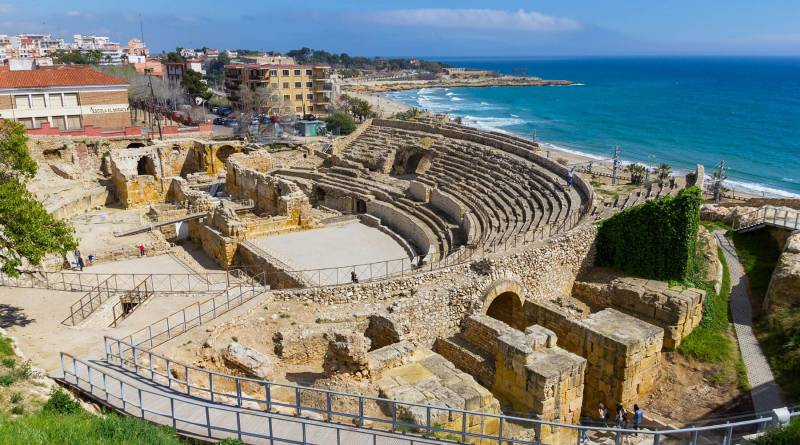
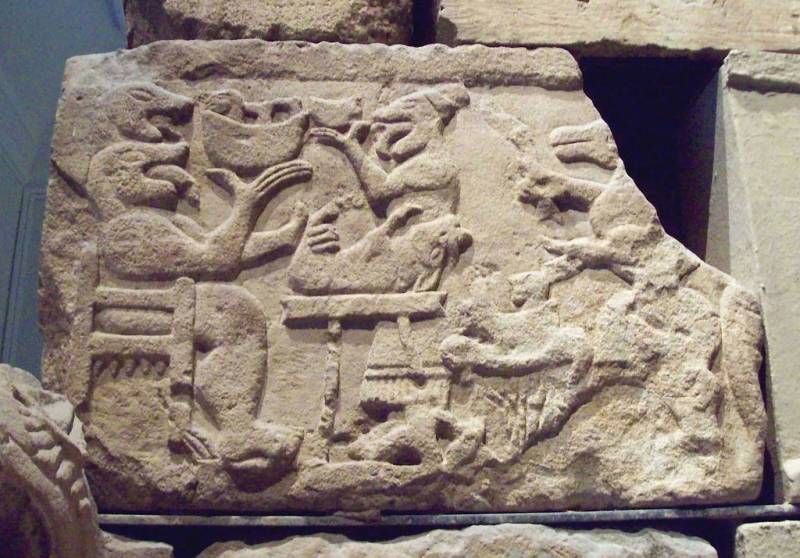

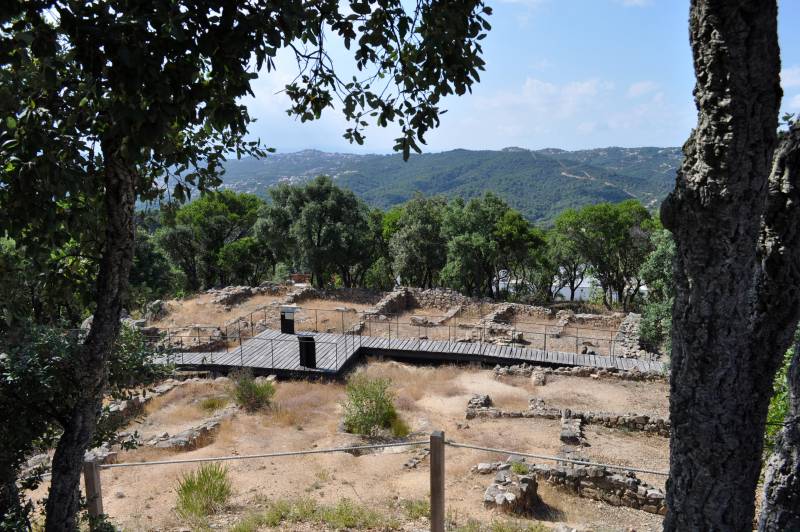
Information